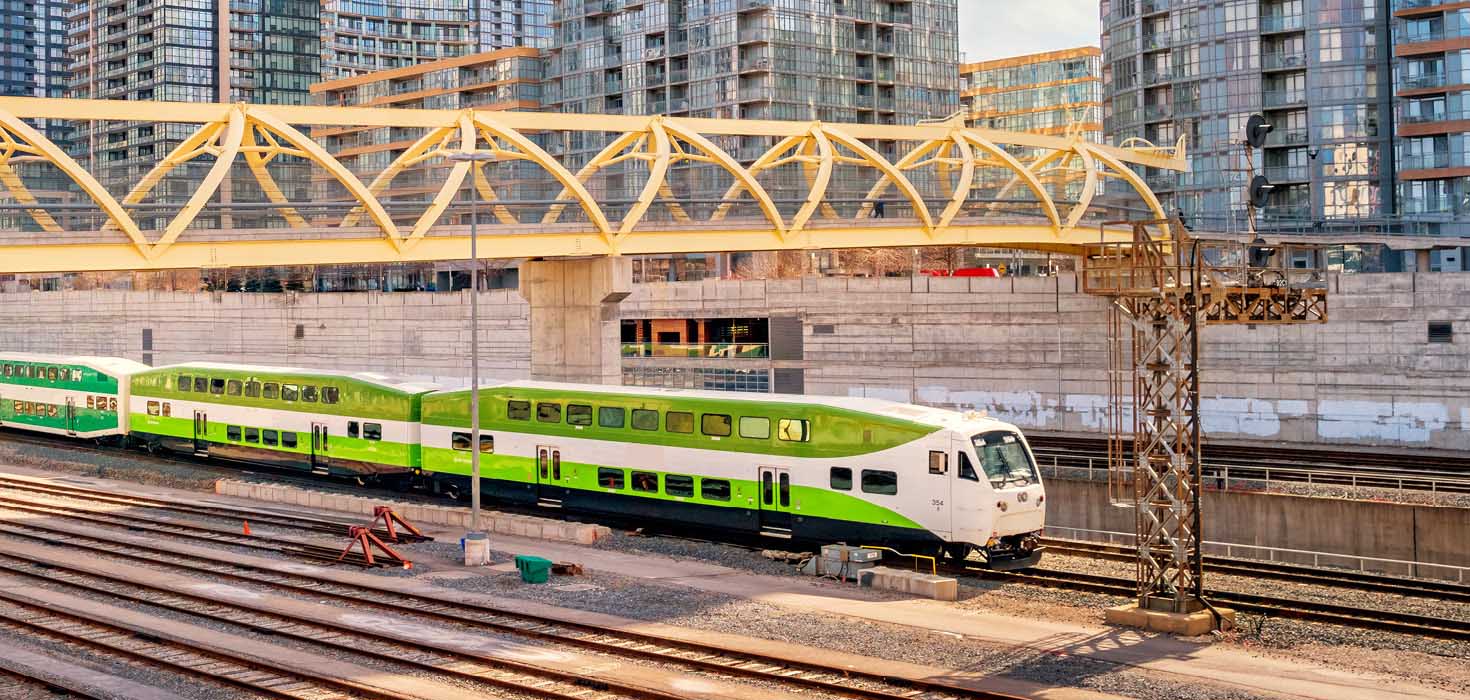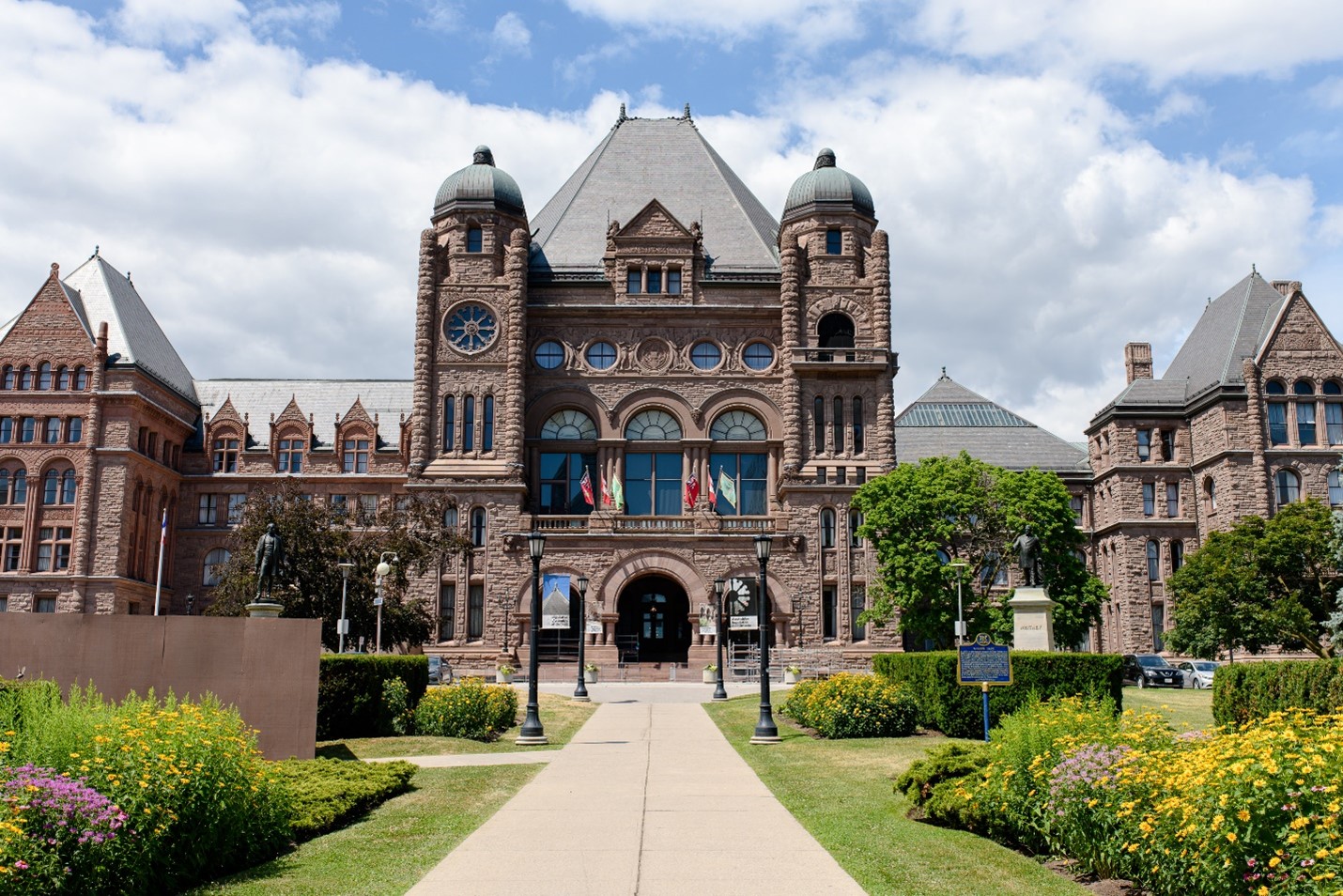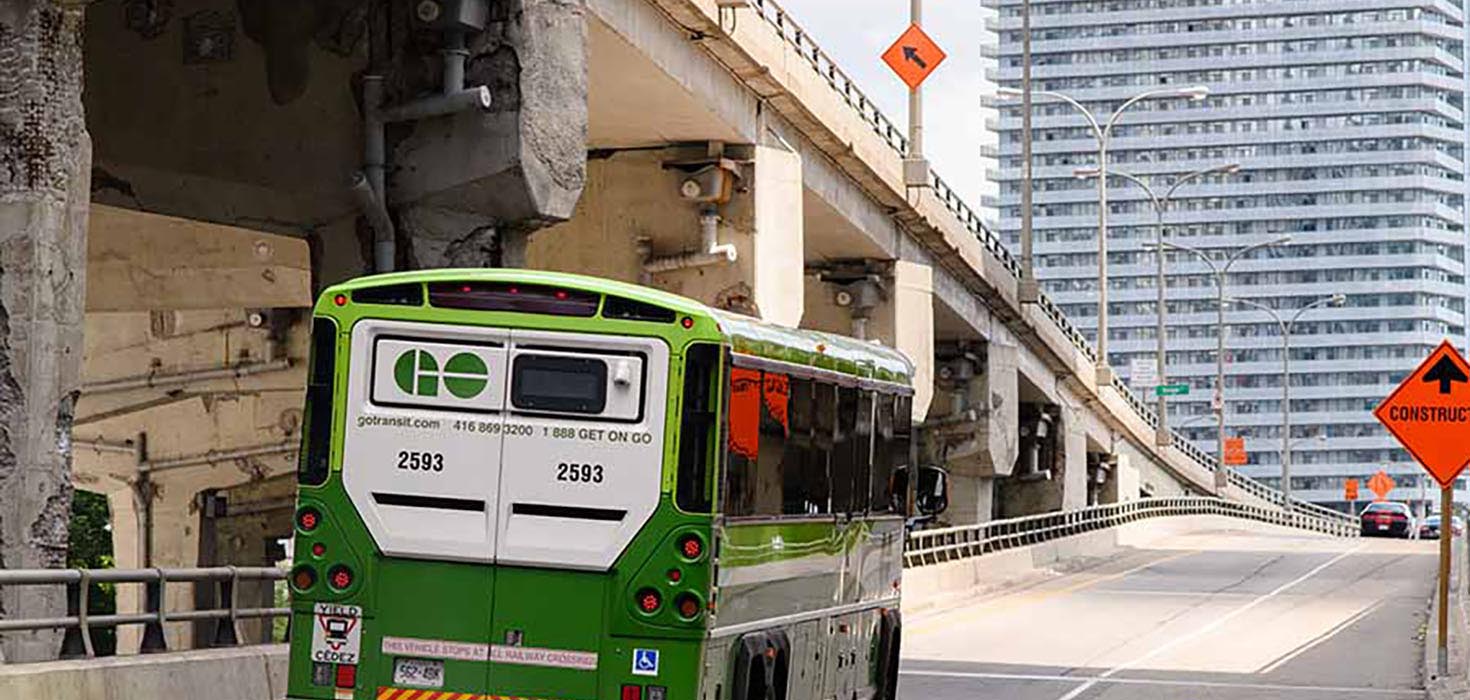Ahead of our sold-out Transportation Symposium: Are We There Yet?, we are speaking with some of the industry experts who will be leading conversations throughout the day. The symposium will convene industry leaders, visionaries, and experts to dissect the long-term trends impacting transportation, transit, and urban mobility across the Toronto Region,
Our region is on the cusp of a transportation revolution, with more than $80-billion in transit capital projects underway, marking both historic opportunities and formidable challenges. The integration of diverse transit modes, fare harmonization, and the pivot towards more dynamic, community-centric service models highlight the strategic directions being pursued to enhance the urban mobility landscape.

To better understand how we can get our region moving, Karla Avis-Birch, Chief Planning Officer at Metrolinx will host a panel that will navigate how we’re going to get around our region in the future.
With our region expected to grow by over three million residents by 2046, we face unprecedented transportation challenges. Given these challenges, how do we build a transportation network that makes space for cars, buses, streetcars, subways, LRTs, rideshare services, bicycles and pedestrian pathways? Is there actually a way to create a seamless transportation ecosystem that includes all these modes of transportation?
Karla Avis-Birch: Yes, of course - they definitely can work together, and we need them to work together. My goal in moderating this panel is to encourage our panelists to speak to the necessity of collaboration, because the work we are undertaking will have generational impact and can only be mastered when we work together. I am just as interested as those attending the session and want to know what each of our panelists are doing to fill in the web of the integrated transit network that we're trying to create. That is the conversation I am focused on having!
We’re really focused on this at Metrolinx as we undertake the largest transit expansion in Canadian history. In fact, we’re seeing the region’s transit network fill in right before our eyes as we bring more train and bus service to our customers, and as projects like the Ontario Line, Finch West LRT and the Eglinton Crosstown LRT are all in various stages of development – some almost done construction with others just beginning. There is also GO Expansion, which is already making progress and transforming our region. On our busiest routes, our goal is to create a network that has the capacity to deliver service every 15 minutes or better, in both directions, all day. Customers won’t need to check a train schedule because they’ll know that the next one will be along soon.
As Metrolinx’s Chief Planning Officer, this is a really exciting time as we build for the future introducing more modes of transit and transportation because the objective is to give choice and flexibility, changing the way we travel.

With the recent achievement of fare integration across all transit systems, a significant milestone has been reached in making transportation more accessible and convenient. How do we keep the momentum going? What comes next? And, what are your thoughts around service integration?
K A-B: Fare integration is something that has been a long time coming and something I am proud to lead. On February 26th, together with the Province of Ontario, we launched Ontario’s One Fare Program, which marks a transformative leap forward in our journey to create a unified, seamless transit experience for the Greater Golden Horseshoe. It sets the stage for a host of opportunities to further enhance urban mobility in our region.
And we’re not stopping here. Our next step is to leverage this integrated fare system to improve service coordination across different transit providers to ensure that we provide an excellent customer experience by aligning schedules and routes to minimize wait times. Ultimately, I see fare integration as a catalyst for innovation within our transit systems. This includes the expansion of digital platforms and mobile applications that can provide real-time transit information, making the entire transit experience more intuitive.
A quick follow-up question. Service integration is obviously going to take some time. But, can some short-term steps be taken, like starting to route TTC buses directly to GO Train Stations?
K A-B: Yes, we should absolutely start looking at that, but I'll add a caveat. I'm in a data-driven organization, and I’m a data-driven leader that builds on lean principles. So I say, yes, but that's the enthusiast in me. What I would say is, we need to talk about it. We need to understand the data. Where are the people coming from? Would a move like this, really give commuters value for their money? What motivates me is the customer and their experience and that is what drives me to really understand where are the actual transit gaps.
In our evolving landscape of transit, how does Metrolinx view the future of GO Transit? Will GO trains continue to primarily operate as commuter rail service or are there plans to use heavy rail lines across the region for more frequent and versatile transportation options?
K A-B: Well, I'm biased to commuter rail, because commuter rail really takes us back to our core mandate, which is connecting communities. So, I would say that we're still a commuter rail service. Post pandemic, we know that travel patterns have changed. Before COVID-19 we were getting people from outside the city into work and then back home. Now, we're seeing a real change where people are wanting to travel between the municipalities in and around the city. So, this idea of being a commuter rail service is, and always will be, at the heart of what we do. Our evolution is about broadening our role in the region’s transportation ecosystem, ensuring that as we move forward, GO Transit remains a lifeline for our communities.
Any time we talk about urban mobility and getting people out of their cars and onto transit, the issue of ‘the last mile’ comes up as a crucial challenge. Can you talk about how we should go about addressing the ‘last mile’ for residents of the GTHA?
K A-B: The ‘last mile’ stands as a testament to our dedication to creating a truly integrated transportation system. Recognizing its importance while actively pursuing innovative solutions to ensure our network facilitates travel enriching our customers’ journey end-to-end. We factor in bikes, walking, local transit – all these modes that we're trying to connect together. It's about providing choices, fostering change in travel habits, and enhancing the ease with which our customers navigate their journeys. By addressing 'the last mile' with thoughtful innovation and strategic partnerships, we connect communities and get our customers there safer, faster and easier.
Finally, with so much growth planned across the region, what strategies are Metrolinx considering to ensure new residential and business areas are effectively integrated into the our transit network?
K A-B: Trip purpose is a major priority for me. So really, it’s not about only what we do on our own; rather, it’s what we could do with the City of Toronto, what we could do with MiWay, what we could do with Barrie Transit. It is all about how we collaborate with our partners and leverage the PRESTO payments system. This discussion extends to the concept of transit-oriented communities and how we’re integrating the live, work, play model into our planning. We’re looking at how transit is an attractor and enabler for developing complete communities, where people have easy access to amenities, services, and leisure without the reliance on personal vehicles. As we move forward, we are committed is listening to and engaging with the communities we serve so we can respond and adapt to changing demographics and travel patterns to ensure that our transit system reflects and supports the diverse needs for generations to come.
Thank you to our Transportation Symposium partners.



